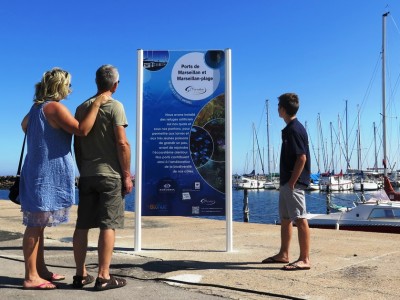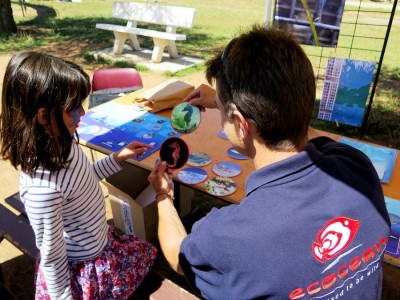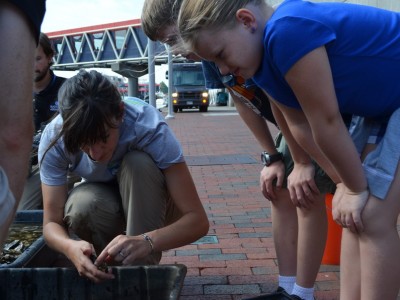Raising public awareness
Over 80% of marine pollution come from land and in the 30 years between 1970 and 2000, the Mediterranean coastal population increased from 96 million to 145 million, namely a 51% increase.
This concentration of population in the expanding coastal cities is accompanied by significant challenges in terms of environmental management (pollution, waste management, building of new coastal infrastructures…). This is a major issue for the people in charge with reducing the pressure on natural environment. Unlike terrestrial environment, and apart from the macro-waste, damage done to marine ecosystems are not visible. And yet, humans are directly dependent on them. Thus, combining economic development and the preservation of natural environments is one of the main challenges of tomorrow’s world.
Making the invisible visible
At the interface between the city and the sea, ports are an ideal place to raise public awareness for the protection of marine ecosystems.
We love what marveled us, and we protect what we love.
Jacques-Yves Cousteau
From the docks, the Biohut invites passers-by to question the presence of life in the harbor and discover with this process how the port host juveniles of many species, who grow up in the calm waters of the harbor before joining the open sea.
Therefore, as part of a NAPPEX approach, educational information explaining the reasons and outcomes of the initiative can be displayed as panels on the docks, or distributed as leaflets. While raising public awareness about the importance of coastal habitat in the fish lifecycle, this will also challenge the traditional vision of the port: from a “dead” industrial zone to a place where young fish can settle and grow.
Involve citizens in concrete actions of participative science
In collaboration with schools, dive centers or professionals from the port site, educational site visits can also be organized to explain and promote the ecological approach of the port.
For example, a Biohut may occasionally be taken out of the water. The collected animals are kept in aquariums while the Biohut is emptied of his oyster shells, which are then dissected in search of small species hiding in it.
Participants of this interactive and fun educational activities are thus invited to observe and even touch this biodiversity whose existence in the port was unknown to them (video “Biohut in Baltimore”)




